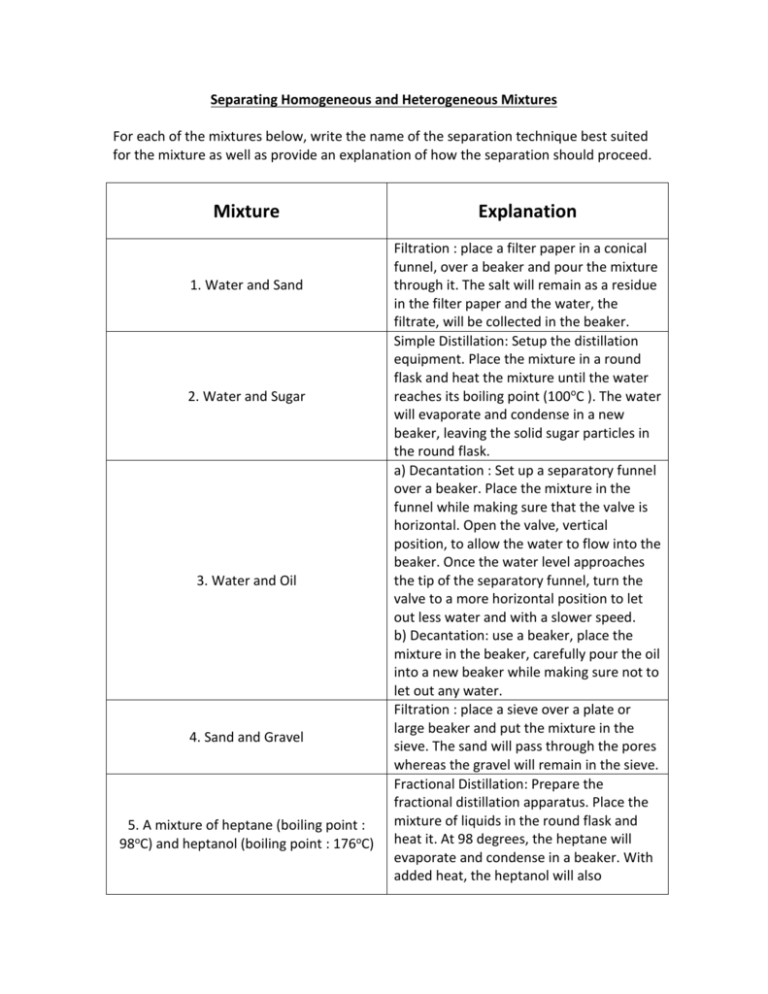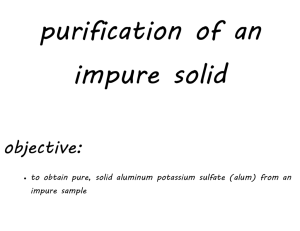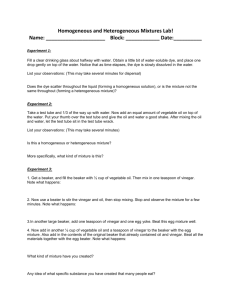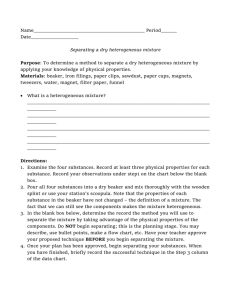Séparation de Mélanges Homogènes et Heterogènes
advertisement

Separating Homogeneous and Heterogeneous Mixtures For each of the mixtures below, write the name of the separation technique best suited for the mixture as well as provide an explanation of how the separation should proceed. Mixture 1. Water and Sand 2. Water and Sugar 3. Water and Oil 4. Sand and Gravel 5. A mixture of heptane (boiling point : 98oC) and heptanol (boiling point : 176oC) Explanation Filtration : place a filter paper in a conical funnel, over a beaker and pour the mixture through it. The salt will remain as a residue in the filter paper and the water, the filtrate, will be collected in the beaker. Simple Distillation: Setup the distillation equipment. Place the mixture in a round flask and heat the mixture until the water reaches its boiling point (100oC ). The water will evaporate and condense in a new beaker, leaving the solid sugar particles in the round flask. a) Decantation : Set up a separatory funnel over a beaker. Place the mixture in the funnel while making sure that the valve is horizontal. Open the valve, vertical position, to allow the water to flow into the beaker. Once the water level approaches the tip of the separatory funnel, turn the valve to a more horizontal position to let out less water and with a slower speed. b) Decantation: use a beaker, place the mixture in the beaker, carefully pour the oil into a new beaker while making sure not to let out any water. Filtration : place a sieve over a plate or large beaker and put the mixture in the sieve. The sand will pass through the pores whereas the gravel will remain in the sieve. Fractional Distillation: Prepare the fractional distillation apparatus. Place the mixture of liquids in the round flask and heat it. At 98 degrees, the heptane will evaporate and condense in a beaker. With added heat, the heptanol will also 6. A mixture of solid iodine and sodium chloride (a solid that dissolves in water) 7. Lead and aluminum pellets 8. Salt and iron filings evaporate and condense in a new beaker OR once you’ve removed the heptane from the mix, you can leave the heptanol in the round flask. The fractional column will ensure that the heptanol does not evaporate and condense along with the heptane. Dissolution, filtration and evaporation. Pour water on the mixture in order to dissolve the sodium chloride in the water. Filter the new liquid mixture through filter paper in order to keep the solid iodine on its own. Finally, instead of distilling the mixture, you can evaporate the water and collect the salt in a beaker because water was not part of the original mixture. Separate the aluminum pellets from the solid lead by hand. Magnetism : use a magnant to pull the iron filings away from the salt.






